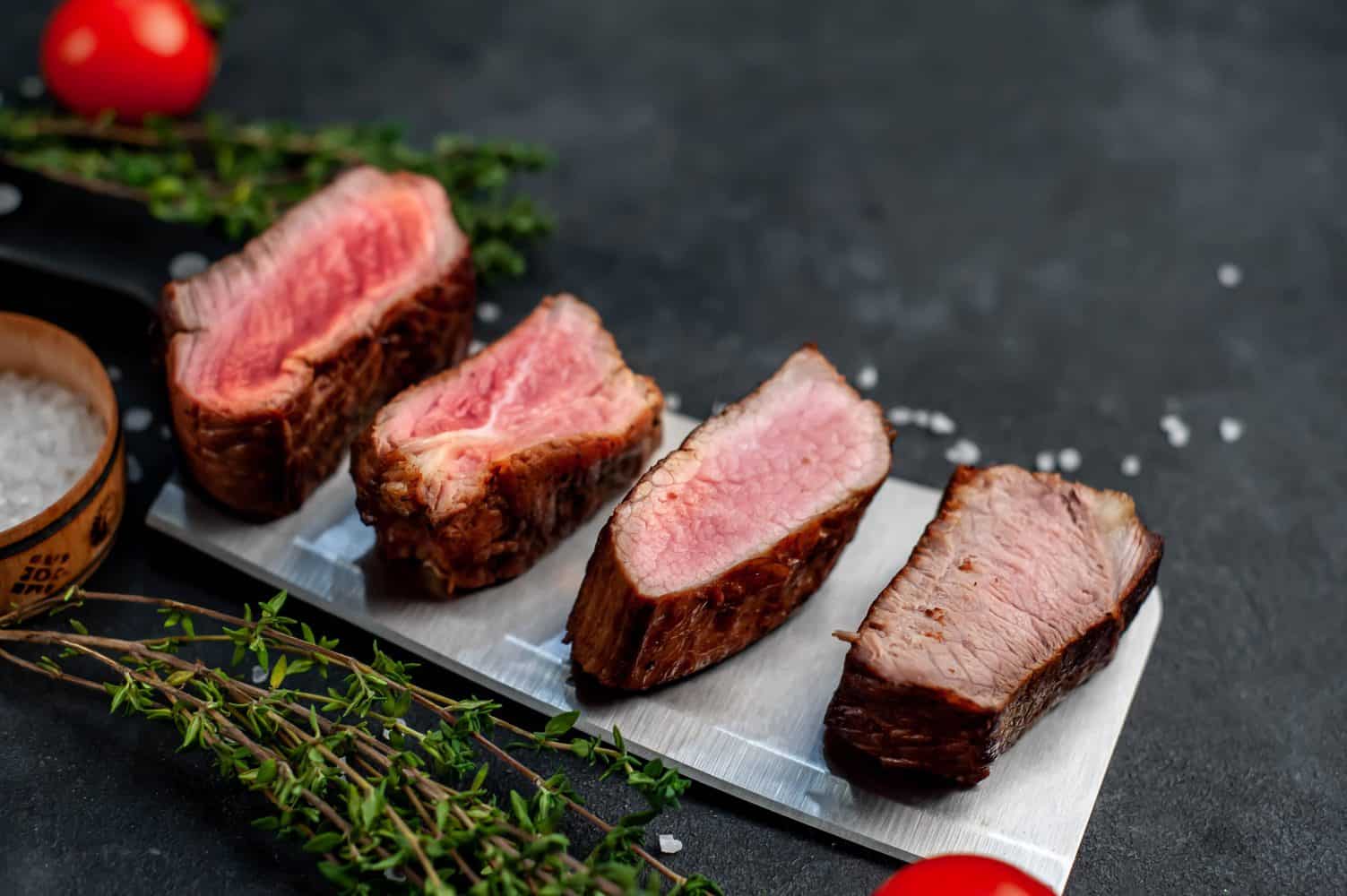Cooking steak to the perfect doneness is an art that every meat lover should master. Whether you're grilling outdoors or cooking indoors, understanding steak doneness internal temperature is crucial for achieving the desired taste and texture. Proper temperature control ensures your steak is safe to eat while maintaining its flavor and juiciness. In this comprehensive guide, we'll delve into the science of steak cooking and provide you with the knowledge to consistently deliver restaurant-quality results.
Steak doneness internal temperature refers to the internal heat level that your steak reaches during cooking. This temperature determines the texture and flavor profile of the meat, ranging from rare to well-done. Understanding these temperature ranges helps you customize your steak to your personal preference, whether you enjoy a tender medium-rare or a fully cooked well-done steak.
With the right techniques and tools, anyone can become a steak-cooking expert. This guide will cover everything you need to know about steak doneness, including internal temperature charts, cooking methods, and tips for achieving the perfect steak every time. Let's dive in!
Read also:Connor Jessup Net Worth A Comprehensive Guide To The Rising Stars Wealth
Table of Contents:
- Biography
- Why Temperature Matters
- Steak Doneness Internal Temperature Chart
- Measuring Temperature Accurately
- Cooking Methods and Temperature Control
- Factors Affecting Internal Temperature
- The Importance of Resting Steak
- Common Mistakes to Avoid
- Tips for Perfectly Cooked Steak
- Conclusion
Why Temperature Matters in Steak Cooking
Understanding steak doneness internal temperature is essential for several reasons. First, it ensures food safety by eliminating harmful bacteria that may be present in raw meat. Second, it allows you to achieve the desired texture and flavor profile, which varies significantly depending on the level of doneness.
How Temperature Affects Steak Texture
As steak cooks, its internal temperature causes changes in the meat's proteins and moisture content. At lower temperatures, the meat remains tender and juicy, while higher temperatures result in firmer, drier textures. Here's a quick breakdown:
- Rare: Juicy and soft, with a deep red center
- Medium-rare: Slightly firmer, with a warm red center
- Medium: Firm, with a pink center
- Medium-well: Firm and slightly dry, with minimal pinkness
- Well-done: Firm and dry, with no pinkness
Steak Doneness Internal Temperature Chart
Refer to the following chart to determine the ideal internal temperature for your preferred level of steak doneness:
| Doneness Level | Internal Temperature (°F) | Internal Temperature (°C) |
|---|---|---|
| Rare | 120-125°F | 49-52°C |
| Medium-Rare | 130-135°F | 54-57°C |
| Medium | 140-145°F | 60-63°C |
| Medium-Well | 150-155°F | 66-68°C |
| Well-Done | 160°F and above | 71°C and above |
Measuring Temperature Accurately
To ensure your steak reaches the correct internal temperature, use a reliable meat thermometer. Insert the thermometer into the thickest part of the steak, avoiding any bones or fat, for an accurate reading.
Types of Meat Thermometers
- Digital Instant-Read Thermometers: Provides quick and precise readings.
- Thermocouple Thermometers: Offers the fastest response time for temperature measurement.
- Thermometer Forks: Combines a thermometer with a fork for convenience.
Cooking Methods and Temperature Control
Different cooking methods affect how quickly and evenly steak reaches its internal temperature. Here are some popular methods:
Read also:2nd Largest Hospital In The World Exploring Its Size Services And Impact
- Grilling: High heat sears the outside while cooking the inside to perfection.
- Pan-Seared: Creates a flavorful crust and maintains juiciness.
- Oven Roasting: Ideal for thicker cuts, ensuring even cooking.
Factors Affecting Internal Temperature
Several factors influence the internal temperature of your steak:
Thickness and Cut
Thicker cuts require longer cooking times to reach the desired internal temperature compared to thinner cuts.
Starting Temperature
Bringing steak to room temperature before cooking can help it cook more evenly and reach the correct internal temperature faster.
The Importance of Resting Steak
Allowing your steak to rest after cooking is crucial for retaining its juices. During resting, the internal temperature continues to rise slightly, a process known as "carryover cooking." This ensures your steak reaches the desired doneness without overcooking.
Common Mistakes to Avoid
Here are some common mistakes that can affect steak doneness internal temperature:
- Cooking at too high a temperature, which can lead to an overcooked exterior and undercooked interior.
- Not using a meat thermometer, resulting in inconsistent doneness.
- Skipping the resting period, causing juices to escape and leaving the steak dry.
Tips for Perfectly Cooked Steak
Follow these tips to achieve the perfect steak every time:
- Choose high-quality cuts of meat for the best flavor and texture.
- Season generously with salt and pepper to enhance natural flavors.
- Use a meat thermometer to monitor internal temperature accurately.
Conclusion
Mastering steak doneness internal temperature is key to cooking a perfect steak. By understanding the relationship between temperature and texture, using the right tools, and following best practices, you can consistently produce restaurant-quality results at home. Remember to always prioritize food safety while striving for the desired level of doneness.
We encourage you to share your steak-cooking experiences in the comments below. Additionally, explore other articles on our site for more culinary insights and tips. Happy cooking!
Data Source: USDA Food Safety and Inspection Service

